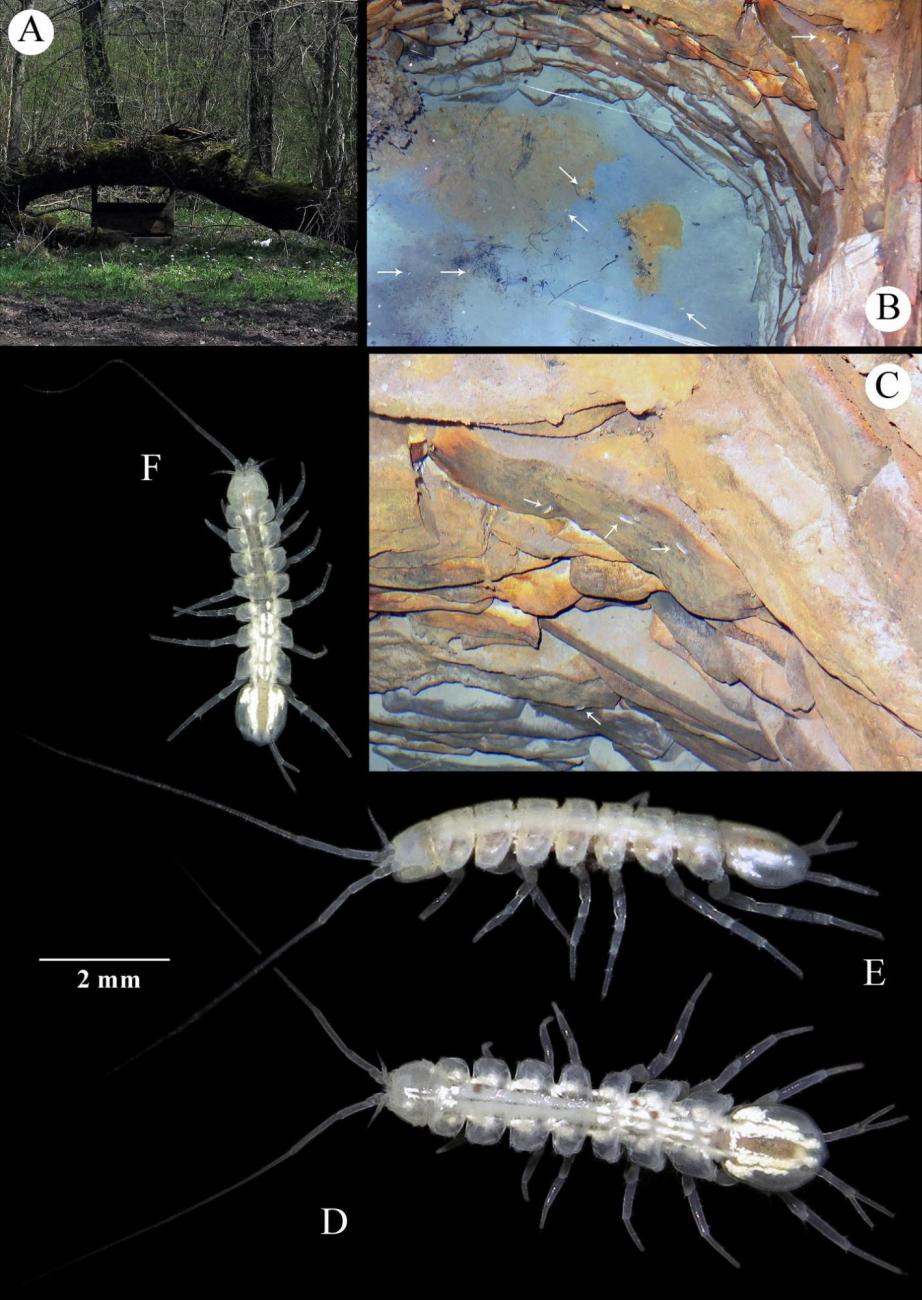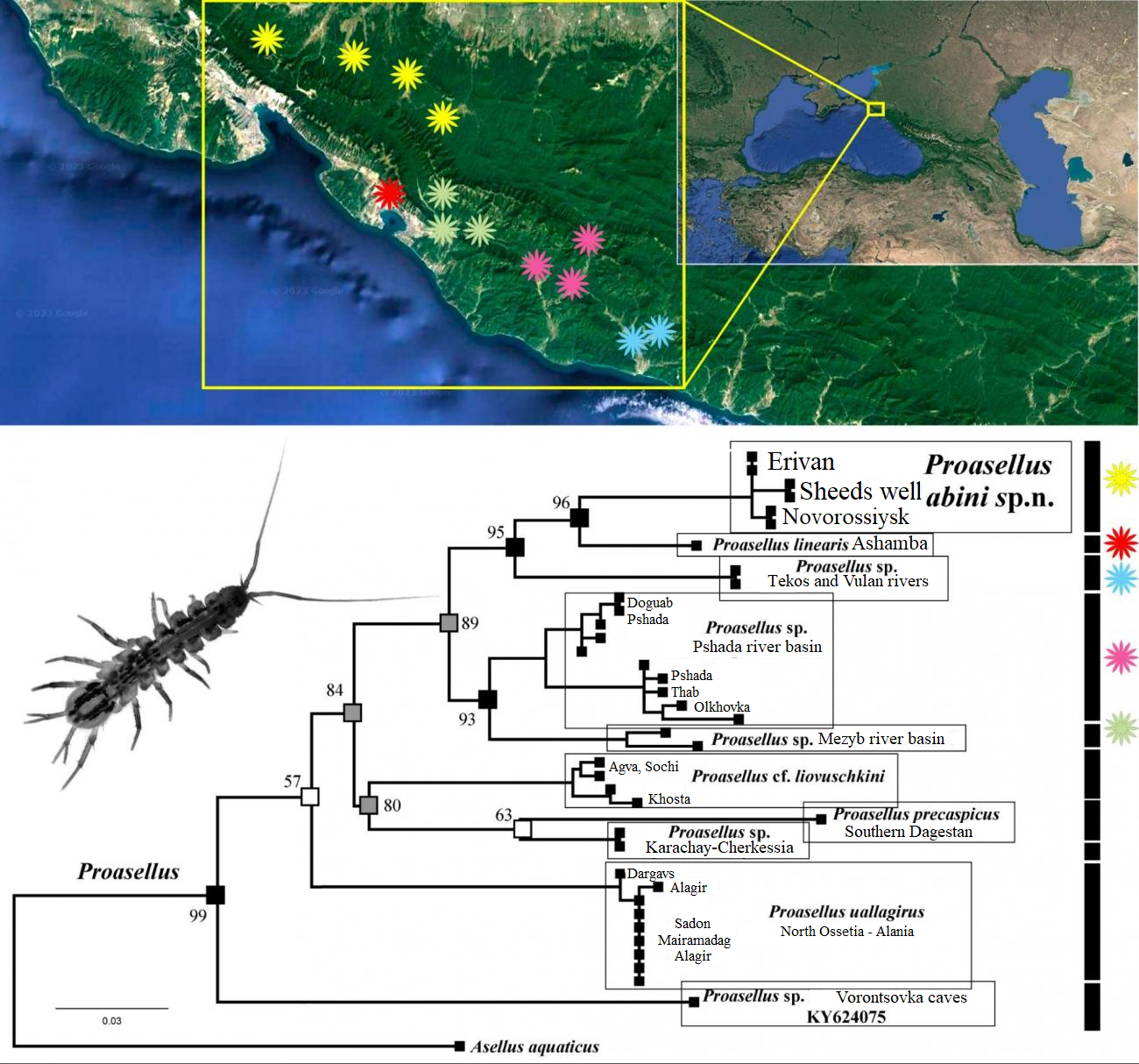
The staff of the A.N. Severtsov Institute of Ecology and Evolution of the Russian Academy of Sciences (IEE RAS) described a new stygobiont species of the genus Proasellus Dudich, 1925 (Crustacea: Isopoda: Asellidae), Proasellus abini Marin & Sinelnikov, 2024, which inhabits hypogeum biotopes and underground waters of the Abin River basin, located in the southwestern foothills of the Caucasus Range.
At present, only one species of this genus, Proasellus linearis Birštein, 1967, is known from the western foothills of the Caucasus, namely from the Evstafevskaya cleft near Gelendzhik (Birshtein, 1967). This location most likely refers to the sources of the small mountain river Ashamba (Yashamba), which originates on the southern slope of the Markhot ridge and flows into the Black Sea in the area of Golubaya Bukhta (Gelendzhik). Endemism of this region has already been demonstrated in another group of hyporheic crustaceans, representatives of the genus Niphargus Schiödte, 1849 (Crustacea: Amphipoda: Niphargidae) and representatives of the genus Lyurella Derzhavin, 1939 (Crustacea: Amphipoda: Crangonyctidae) (Marin et al., 2021a; Marin, Palatov, 2021b). The new species is morphologically and genetically close to Proasellus linearis.
Stable isotope analysis of δ13C and δ15N showed that this species occupies a low trophic position (C1) (-22.67±0.12 for δ13C and 4.40±0.32 for δ15N ), close to the main herbivores in the general scheme of isotope values for macrozoobenthos. A similar trophic position is characteristic of herbivorous crustaceans co-occurring in the springs of the Novorossiysk Gap, such as undescribed species of the genus Niphargus (Amphipoda: Niphargidae), Synurella adegoyi Marin et Palatov, 2022 (Amphipoda: Crangonyctidae) and Gammarus cf. komareki Schäferna, 1923 (Amphipoda: Gammaridae), which probably feed on primary organic matter, such as remains and roots of various forest plants, falling into the hyporheic and groundwater.
Currently, 9 species of the genus Proasellus are known from different areas of the Caucasus: P. linearis Birštein, 1967 and P. abini Marin et Sinelnikov, 2024 are known from the western part of the Caucasus region (the Gelendzhik region and the Abin River, respectively), P. mikhaili Palatov & Chertoprud - in the vicinity of the city of Tuapse, P. ljovuschkini (Birštein, 1967), P. similis (Birštein, 1967) and the epigeic species P. cf. infirmus (Birštein, 1936) are known from the southeastern part of the Caucasus region (Khostinsky urban district and Sochi), P. infirmus (Birshtein, 1936) was found in Abkhazia, in springs in the lower reaches of the Gumista River, P. uallagirus Palatov & Sokolova, 2021 was described from North Ossetia, and P. precaspicus Palatov, Dzhamirzoev & Sokolova, 2023 - from the eastern part of the North Caucasus (Dagestan). Molecular genetic analysis has shown that all South Caucasian species of the genus Proasellus represent a monophyletic clade, with the species inhabiting hypogeic/underground habitats in the basins of various local mountain rivers, such as Ashamba, Abin, Pshada, Mezyb, Vulan, and have genetically diverged over the past 2 million years, probably as a result of mountain growth and the separation of karst massifs.
Most of the diversity of these crustaceans in the Palearctic remains undescribed, which is also true for the Caucasus, especially the southwestern part of the Caucasus Mountains.
The article is published in the international peer-reviewed journal Invertebrate Zoology: Marin I.N., Sinelnikov S.Yu. 2024. A new species of the genus Proasellus (Crustacea: Isopoda: Asellidae) from the Abin River basin, with the preliminary data on the diversity of the genus in the southwestern foothills of the Russian Caucasus // Invertebrate Zoology. Vol.21. No.1: 81–93.

